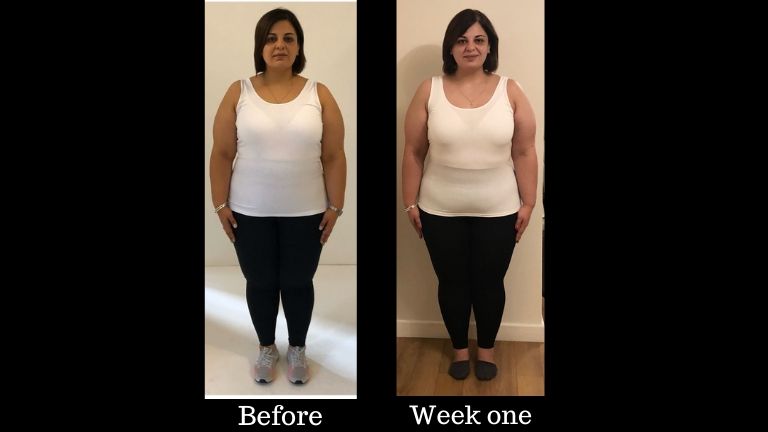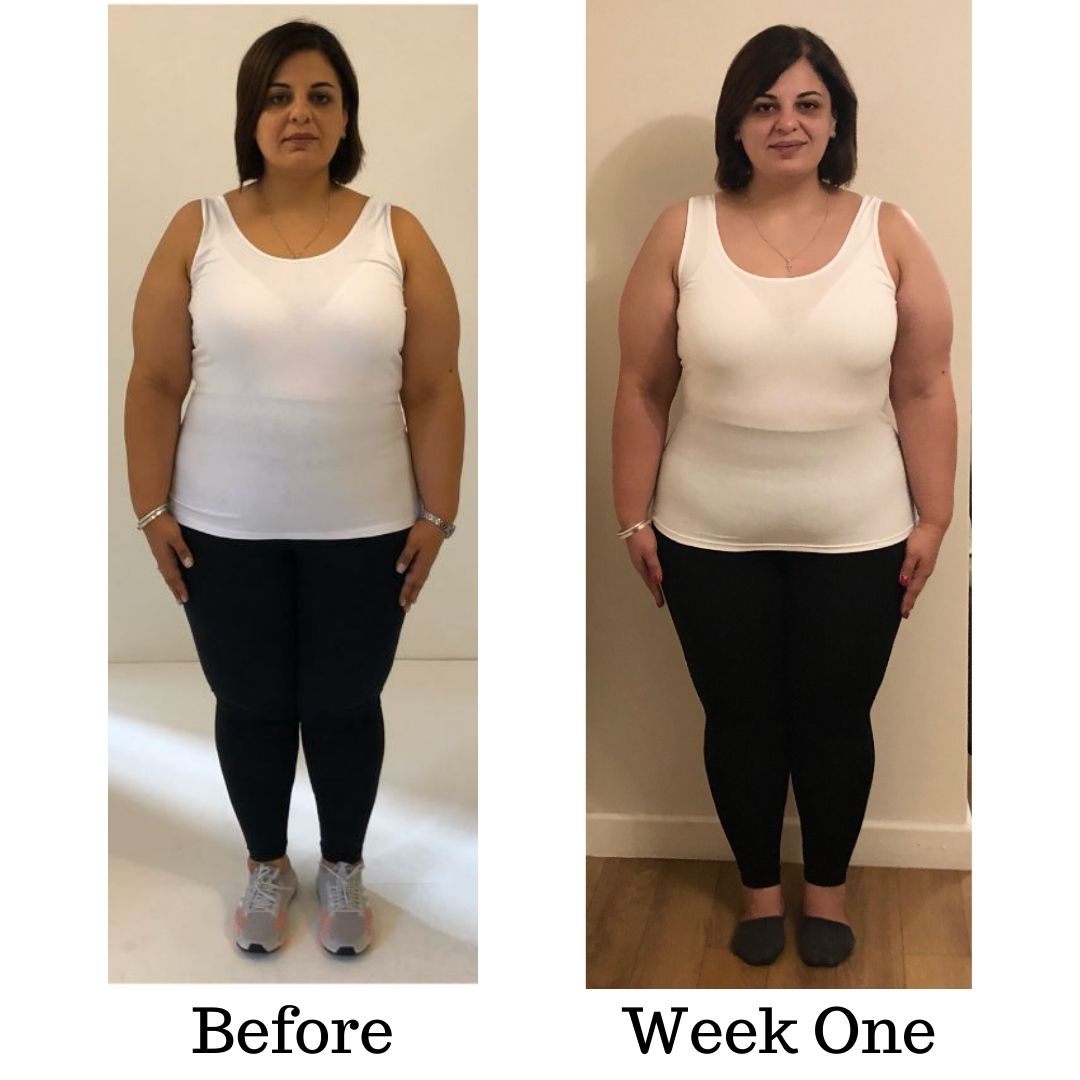It’s two weeks into Dina’s 10-week weight loss transformation with Your Body Programme and she has already dropped a staggering four kilos – that’s over half a stone in one week. This is how
Welcome back to my 10 week weight loss transformation diary. It’s time to reveal how I got on in week two (read all about how I got started in week one here).
I was beyond excited to find out that I had already lost four kilos in just one week – that’s over half a stone!
I am amazed just how different I feel after making a few small changes to my daily routine and diet. I have more energy, I feel happier and I am feeling super motivated.
Plus, I am so happy that I am already seeing a change in my body, my bloating has gone down and my clothes already have a bit of give in them rather than that uncomfortable tight feeling.
I was beyond happy after my first training session with Terry, I had the biggest smile on my face the whole walk back to the car.
Oh and by the way this walk back to the car was about 20 minutes long, as I purposely parked further away – which I would never have done before. For the first time ever I am actually looking forward to training.
My wonderful transformation guides and personal trainers, Terry Fairclough and Luisa Valenti, founders of Your Body Programme, also seem pleased with my below results:
| Before | End of Week 1 | |
| Weight (kg) | 120 | 116 |
| Chest (centimetres) | 118 | 116 |
| Waist (centimetres) | 115 | 114 |
| Hips (centimetres) | 141 | 139 |
| Total weight-loss | N/A | 4 |
In the last two years, my weight gain has been so rapid, I started to worry that there was no way out. I really want to get fit and healthy before my 40th birthday in four years’ time.
And if I continue to get results like this every week, I will be so much closer to reaching my ideal goal of getting back to my measurements from seven years ago.
As I mentioned last week, I work in the same office as the Healthista girls and after going to them for weight -loss advice they told me about Terry Faiclough and Luisa Valenti and their amazing, Your Body Programme.

I have been searching for a weight loss programme that wouldn’t just be easy to maintain in the long-run but also one that I would enjoy and not end up resenting – and I can already tell you, that I certainly wont be resenting Terry and Luisa’s plan any time soon (if ever!)
Founder Terry is a personal trainer and nutritional therapist after being a chef for ten years and co-founder Luisa is also a personal trainer after a previous career as a dancer. Terry is also a celeb trainer – but he doesn’t dish the dirt or name names on which celebs he trains…
What stood out to me the most was their approach to fitness, it wasn’t like anything I had seen or tried before – people need to train and eat differently depending on their body types.
Your Body Programme focuses on individual body types and provides a personalised programme, with exercises and a nutrition plan that matches your specific body type for the best weight loss results. Click here to see what body type best describes you.
This week I thought I would share the five diet rules Terry and Luisa have told me are very important for me to stick to if I want to lose weight properly during this transformation.
From never skipping breakfast to avoiding carbs after five o’clock – here are my five diet rules:
#1 Don’t starve yourself
We have all been down the ‘starve yourself to get thin road’ and NEWSFLASH…it almost always doesn’t work (especially in the long-run).
Starving yourself will make you hungrier of course, will cause cravings, can mess up your metabolism and will cause you to be down right miserable.
From a scientific point of view it also isn’t advised. Leptin is a hormone that controls your appetite, regulates metabolism and promotes fat burning.
Fat cells release leptin into the bloodstream and this is what sends messages to the brain to say that you are full and don’t need anymore food – so you stop eating.
Leptin will then lower again after a few hours of not eating, this will make you start to feel hungry and want to eat something.
But if your leptin levels stay too low for too long (because you are starving yourself) your body will go into starvation mode.
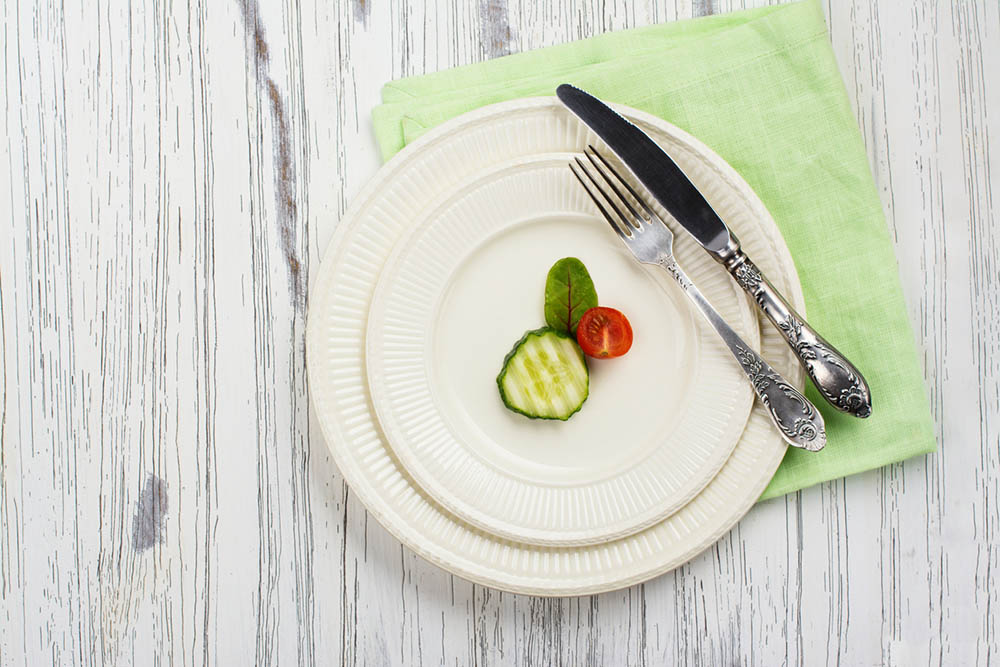
This ‘starvation mode’ lowers your metabolism (which we totally do not want), increases hunger signals (again, no thank you), and increases the breakdown of protein for energy, instead of the breakdown of fat and carbohydrates for energy, which is the ideal source for energy.
This response causes your body to regain the fat that it has lost but also to store more fat for the next time you decide to starve yourself.
Terry explained that the body is always going to find a way to prevent itself from losing weight. So, starving yourself will actually cause you to gain weight rather than lose it.
A deficiency in key nutrients will affect the functioning of the entire body not just your metabolism
With all that said, starving yourself or dramatically lowering your daily calories also means you will probably be lacking in vital nutrients.
A deficiency in key nutrients will affect the functioning of the entire body not just your metabolism, including adverse effects on your immune system, bone health and heart health, but also many more.
You aren’t going to lose a stone in a week, and rapid weight loss isn’t just unhealthy but also isn’t maintainable. A safe, realistic and maintainable fat loss amount is around one to two pounds per week.
I know I lost half a stone in the first week (rather than the suggested one to two pounds), but that’s because a transformation programme usually involves more intense exercise than normal lifestyles.
To avoid starvation mode but to still lose weight, Terry dropped my calories only slightly from 2,500 to 2,000. Moral of the point? DO NOT starve yourself. I didn’t and I still lost four kilos.
Use this calculator to see exactly how many calories and macros should be eating rather than living off fresh air and misery…
#2 Don’t skip breakfast, even if you are training in the morning
Another ‘tactic’ that people turn to in order to shed the pounds is to not eat breakfast – and no coffee does not count as breakfast.
Plus in many cases, skipping breakfast can cause some people to eat a bigger (more calorific) lunch. Has this happened to you? You skip breakfast and by the time you get round to eating lunch you are ravenous.
It’s worth mentioning though that intermittent fasting (restricting your eating to an eight hour window which usually involves missing breakfast) has become popular and has shown to have many health benefits.
Although intermittent fasting can lead to weight loss, if you are making a big lifestyle change, especially one that involves far more exercise than you are used to, then intermittent fasting may not be a good idea.
However if you aren’t doing much exercise then intermittent fasting may just be for you. Read More: Fasting for weight loss – the nutritionist’s guide
But back to why we SHOULD be eating breakfast. For many of us, exercising early in the morning means not having time to eat and digest their food, unless you are up at silly o’clock in the morning to gobble down a banana and go back to sleep – so not going to happen.
When you wake up, the blood sugar your body needs in order to make your muscles and brain work at their best is usually quite low, therefore breakfast is the perfect opportunity to replenish your blood sugar levels.
training while in a fasted state can increase cortisol (stress) levels
If your body doesn’t receive this fuel from food, you may start to feel zapped of energy pretty quickly, which could affect your workout or cause you to overeat later on in the day.
‘It has been shown that training while in a fasted state can increase cortisol (stress) levels, which can suppress the immune system and break down muscle tissue,’ explains Fairclough.
‘Eating something small and easily digestible will reduce cortisol levels and give you the energy you need to exercise properly and try harder if you want to’. This in turn will lead to better results and bigger weight loss.
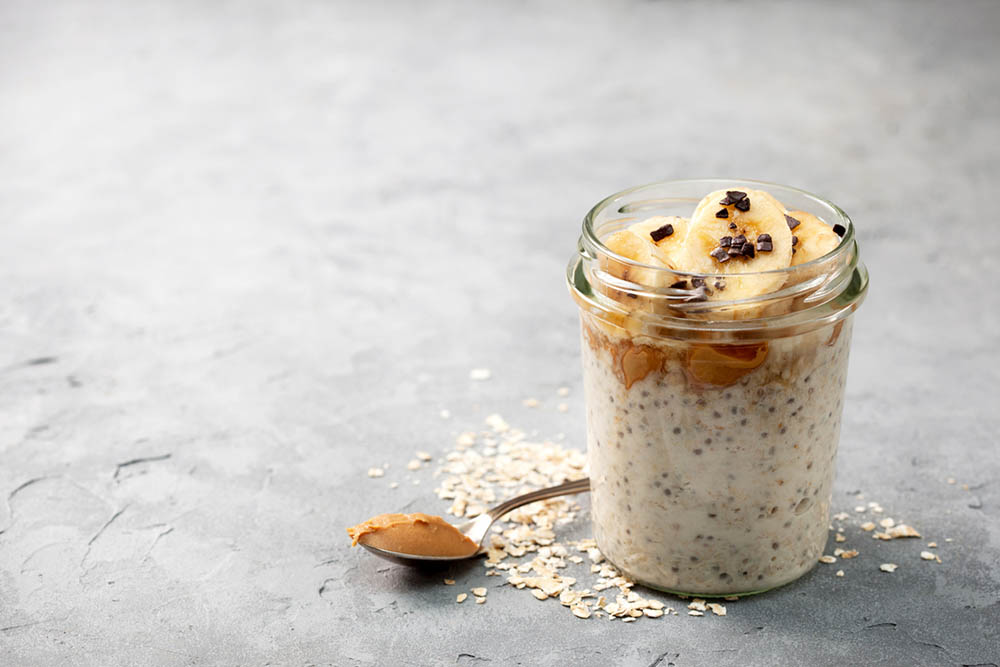
That doesn’t mean you have permission to grab a sweet pastry, or have a big fry up, as large or fatty meals before exercise can make people feel nauseous.
A simple rule for having breakfast before you exercise is that it should be soft, such as a banana, or yoghurt. This enables your digestive system to be able to break the food down comfortably and quickly, without causing indigestion or bloating.
So if you are planning to up your exercise routine, especially if you plan on exercising early on in the day, be sure to have a banana or some yoghurt for breakfast.
#3 Eat two to three hours before you train, and make sure you include carbs
For all those evening exercisers out there like me, it’s best to eat two to three hours beforehand. This gives your body time to digest the food before you workout.
‘The reason we suggest eating two to three hours before you train is to avoid nausea. If you have eaten a large lunch with a high fat content, you are going to feel heavy, sluggish and nauseous, all of which will not have you exercising at your full potential,’ explains Fairclough.
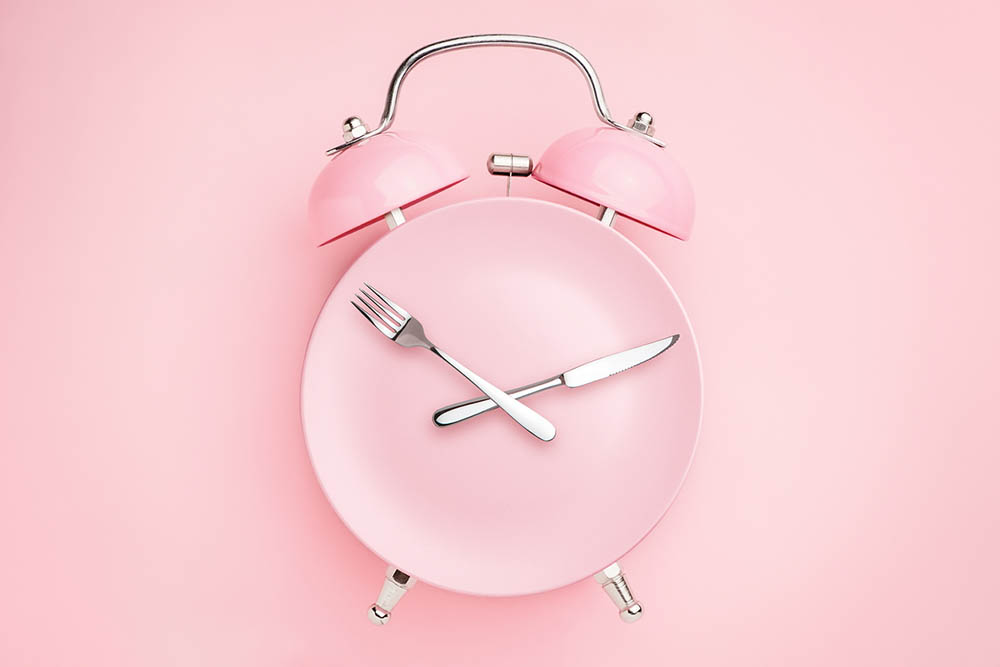
In terms of what to eat two to three hours before you exercise, it seems eating the right carbohydrates with a source of protein is the way to go.
Research has shown that consuming carbohydrates with protein prior to training, can reduce the effects that cortisol has on our muscles, can help to decrease muscle damage, and will help ready the muscles for a quicker recovery post exercise.
Terry has said I am allowed about 100 grams of carbs per day, spread out evenly between my different meals. For example my carb intake looks something like this: breakfast 30 grams, lunch 30 grams, protein shake 30 grams and dinner 10 grams.
Carbs aren’t your enemy (unless you are consuming way over what you need of course) but if you under eat carbohydrates then it can affect your thyroid and a slow thyroid can lead to a slow metabolism.
Be sure to avoid carbohydrates with a high GL (glycemic load) prior to training though. That includes carbs such as white bread, white pasta, white rice and pastries – basically all the naughty stuff.
These types of carbs will give you a sugar rush, and will cause an energy crash in the middle of a workout – which is so not want mid way through a set of killer burpees…
be sure to avoid carbohydrates with a high GL (glycemic load) prior to training as these will give you a sugar rush
As well as carbs with a high GL, you should also avoid fatty foods pre-exercise. That’s because foods high in fat are harder to digest, which will leave you feeling sluggish and could cause stomach cramping.
So did you get all that? If you plan to exercise in the evenings, be sure to consume your lunch or dinner two to three hours beforehand. So if you are training at six o’clock in the evening, eat your lunch no later than 3pm.
Plus, make sure your meal consists of a protein source and a complex carbohydrate. Protein such as chicken, fish, tofu or pulses as well as a complex carbohydrate such as wholegrain pasta, wholegrain rice, quinoa or buckwheat are a good example of what you should aim to eat.
#4 Have a protein shake within 30 minutes after training
So we have covered what to eat before exercise but what about after? Directly after training is called the anabolic (building) phase, which is 15 minutes to an hour directly after training.
Missing this time to consume protein will mean a wasted opportunity to make the most of the hard work you do during your training session.
Muscle damage during training is essential for your body to adapt and change, but Terry explained that I need the correct nutrition in place straight after training to help speed up the recovery so I am ready and able for my next session.
Any fuel you take in after a workout tends to go straight to the muscle rather than being stored as fat.
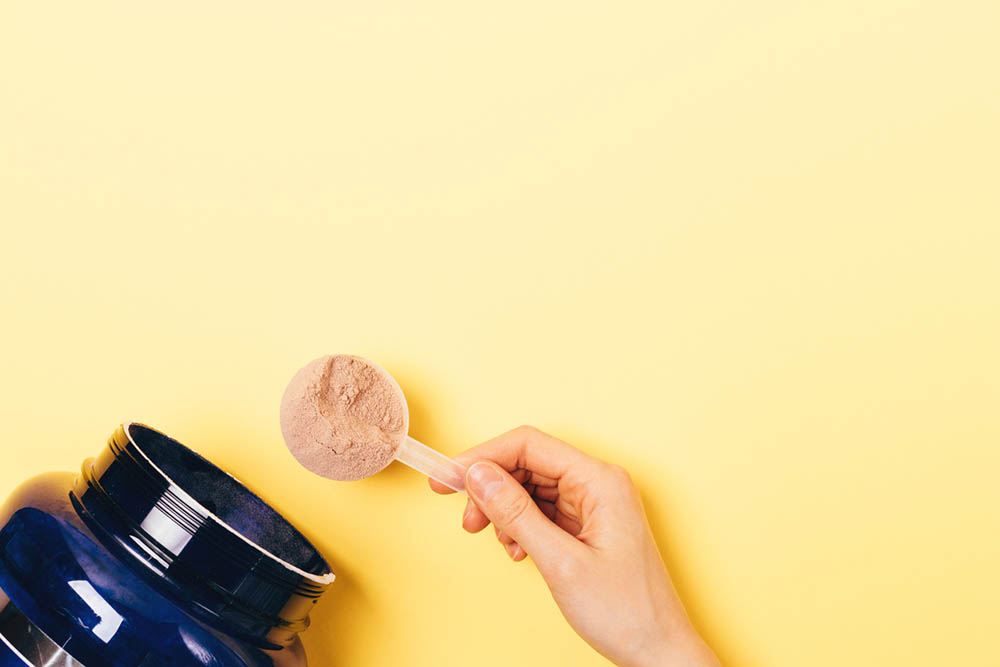
But don’t panic, you don’t have to sprint home to eat or get your fish dinner out on the train. A protein shake is the perfect post exercise meal says Terry.
Although if you are able to eat quickly after training, this is the prefect time to eat fast releasing carbs (that’s the naughtier carbs by the way, white pasta, white rice, bread) as these will get to and replenish your muscles faster than slow releasing carbs such as wholegrain rice and pasta.
It’s also important to get protein to your muscles as soon as possible post exercise, to help your muscles heal and prevent the loss of lean muscle mass, which you totally don’t want seeing as lean muscle mass contributes to the muscular and toned appearance we all crave.
So get that protein shake ready post exercise, your achy body and your future reflection in the mirror will thank you for it (Dina is using Healthista Lean Diet Vegan Protein Vanilla Powder, £19.99 for 500 grams, which is designed to help keep the appetite at bay because it contains glucommannan, a yam that helps keep you full in between meals).
#5 No carbs after 5 o’clock
In general carbohydrates are not an endomorph’s best friend (*cries). That’s because endomorphs don’t process carbs as well as other body types do, we tend to store carbohydrates as fat. (An endomorph is the curvy natural body shape Dina has, which means she can often find it difficult to lose weight – find out more about this in Dina’s update last week).
At the moment I am on 100 grams of carbs a day, spread out over my different meals throughout the day – except for dinner, where I get around 10 grams of carbs from salad or vegtables.
‘Whenever you eat a meal, your blood sugar levels will spike, and your body will use this for energy,’ explains Fairclough. Which is all well and good if you are up and walking about all day.
‘But if you eat carbs in the evening, then you will have that sugar in your blood stream, however it wont be utilised. This is because in the evenings we are far more sedentary than during the day, we sit in front of the TV and of course we go to sleep.
‘Therefore due to the lack of movement in the evening, the sugar that was meant for energy will be stored as fat’.
However on the days where I do train in the evening, Terry has said it is okay for me to have some carbs, as after a workout the carbohydrates will be sucked into the muscle to replenish the glycogen stores, rather than just flowing around the blood stream and being stored as fat.
For evenings where I don’t train though, Terry suggested that my evening meals consist of vegetables and protein, that’s lots of chicken, fish, salad or veg – this will mean my blood sugar wont spike and I wont have excess sugar in my system that can’t be burned off for energy use.
Also, Terry explained that while we sleep we usually burn more fat due to a low activity level. But if someone consumes too many carbohydrates before bed and they haven’t exercised, instead of burning fat your body will burn the sugar from the carbohydrates.
Well that’s convinced me, I can burn fat while I sleep by avoiding carbs at night if I haven’t trained? I think I can live with that.
Workout of the week:
Six different exercises, 45 seconds each exercise with 15 seconds rest between each exercise. This I did four times.
Squat jumps 45, seconds. Rest, 15 seconds,
Push ups, 45 seconds. Rest, 15 seconds,
Kettlebell deadlifts, 45 seconds. Rest, 15 seconds,
Mountain climbers, 45 seconds. Rest, 15 seconds,
Alternating lunges, 45 seconds. Rest, 15 seconds,
Sit ups, 45 seconds. Rest, 2 minutes.
Repeat three more times.
Come back every week to read Dina’s week by week diary of her weight loss transformation with Terry and Luisa from Your Body Programme, with tips and advice from the experts.

The idea came about after Terry and Luisa saw other personal trainers regularly offering the same generic plan to every client, regardless of gender, goal or body type.
Terry and Luisa are passionate about the need to train everyone as an individual to achieve maximum results, and therefore don’t use a one-size-fits-all approach.
Relevant Healthista Content:
I did a body transformation and lost 11 inches – this is what REALLY works for fat loss
30 day transformation using a low calorie diet
Healthista Content You May Also Like:
7 best Golden Globe body transformations
9 diet rules this celebrity personal trainer lives by
Body transformation week one – operation FAT LOSS
5 fat loss supplements proven by science
Like this article? Sign up to our newsletter to get more articles like this delivered straight to your inbox.



